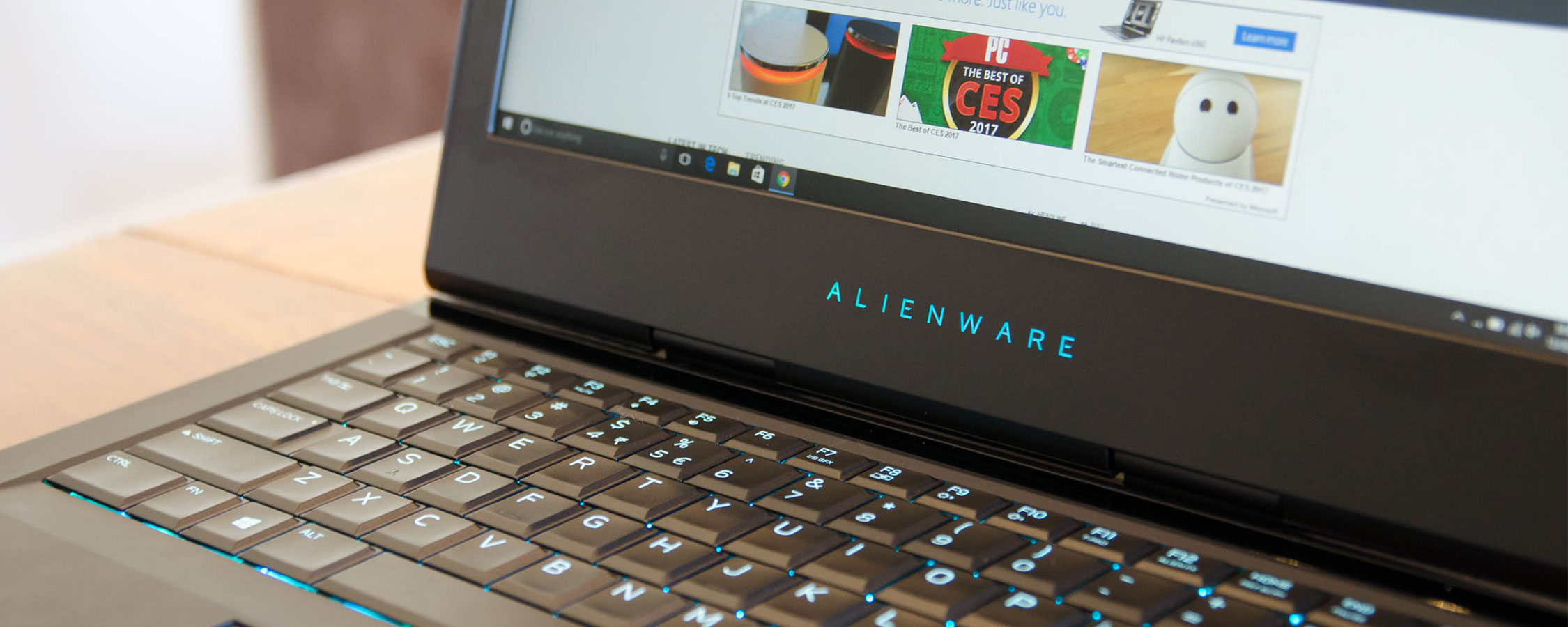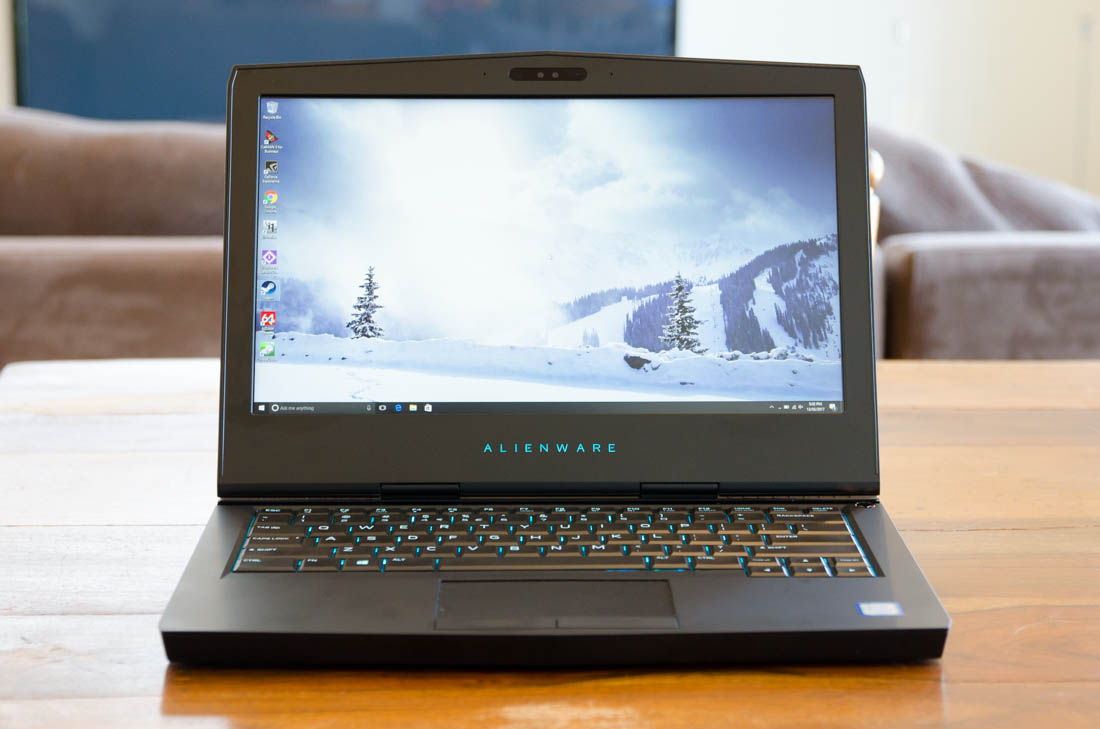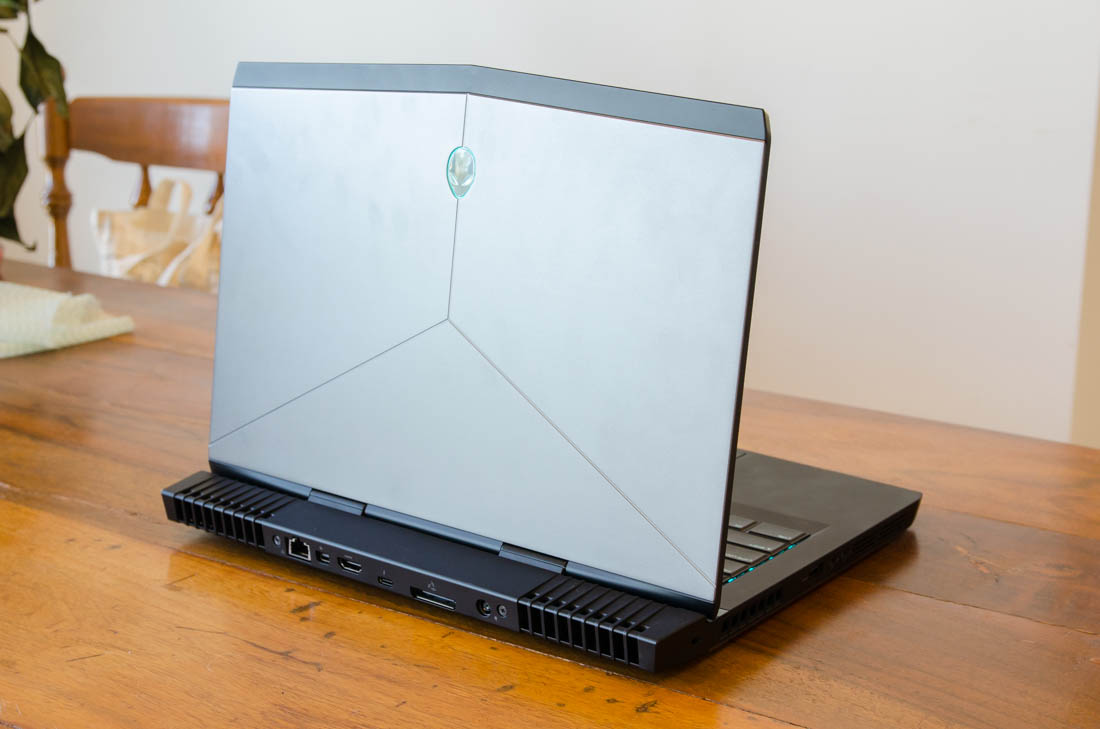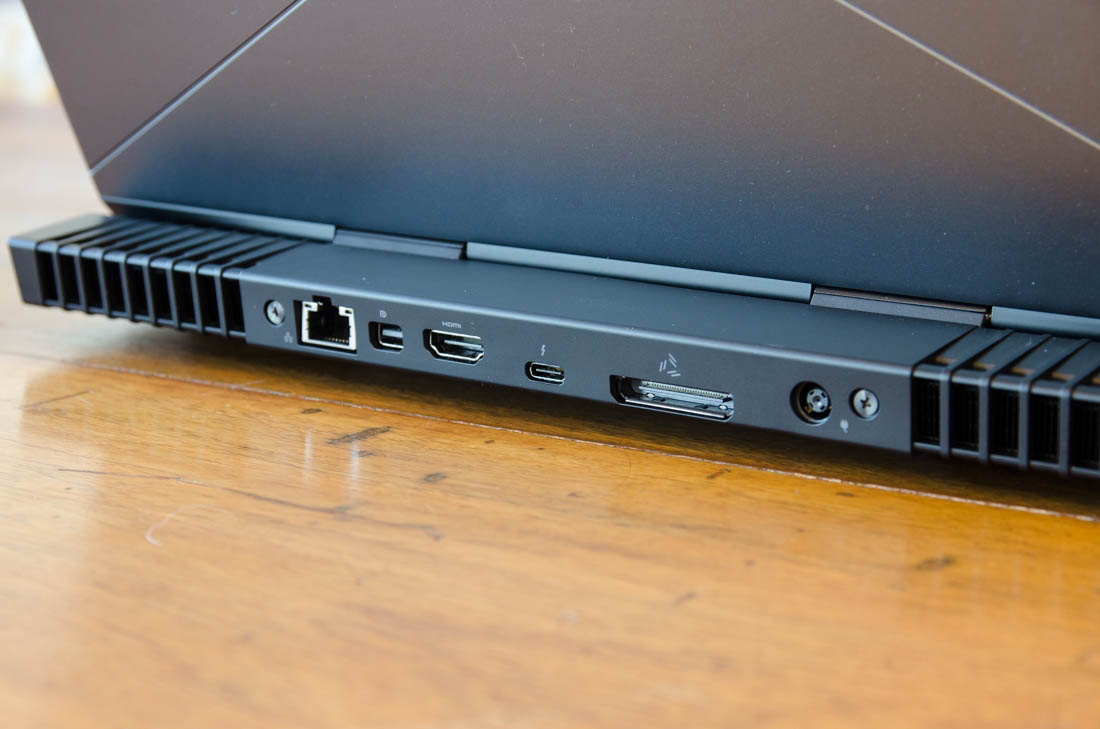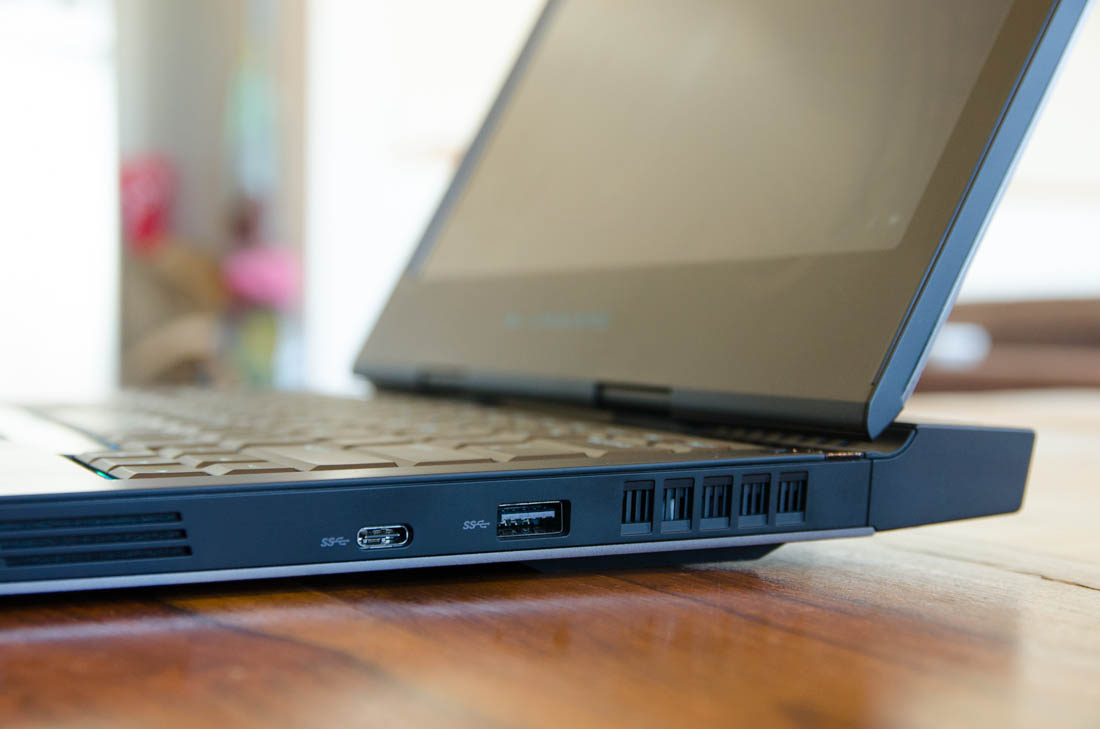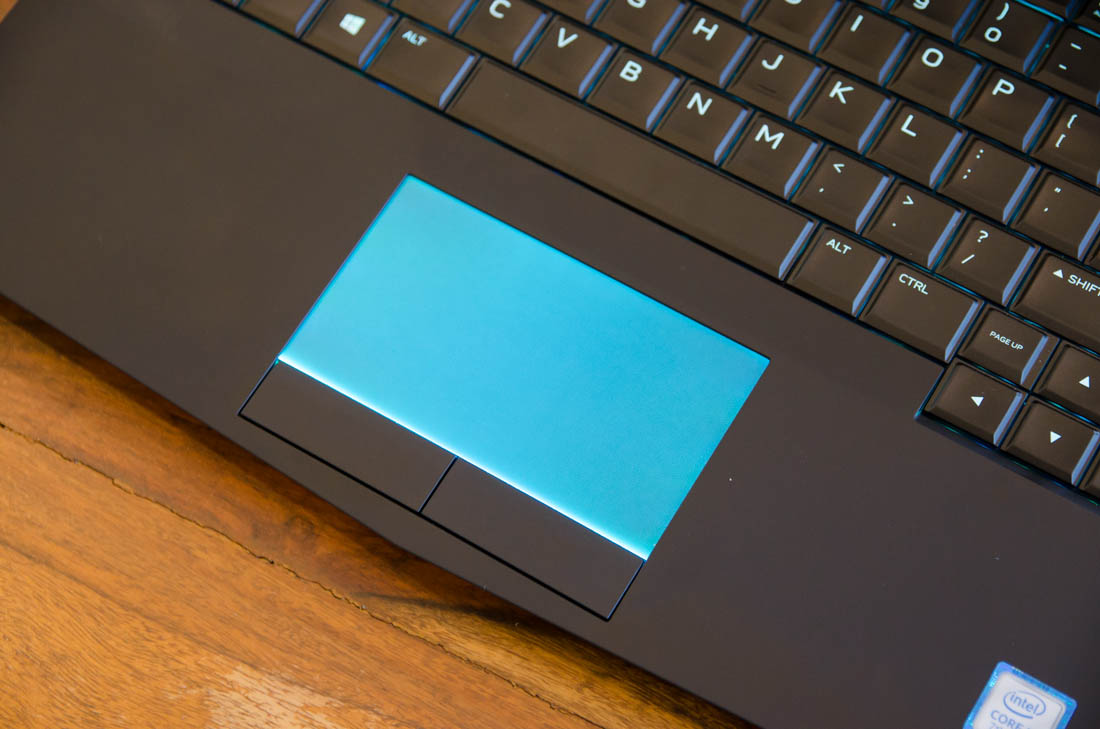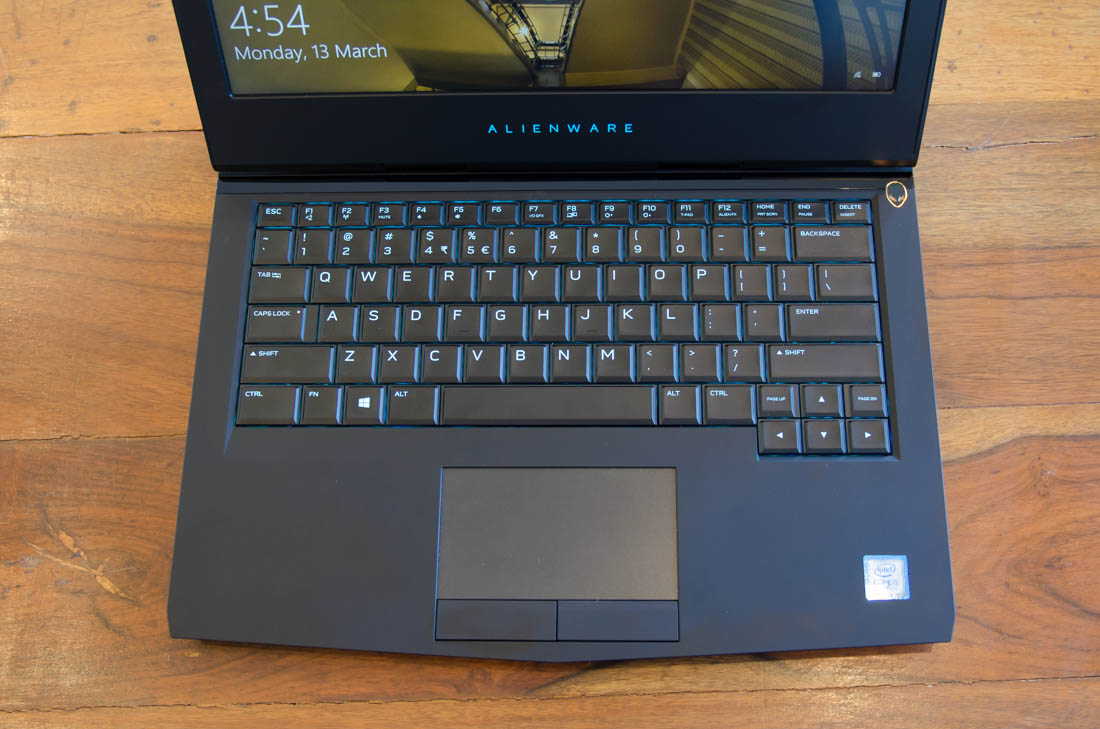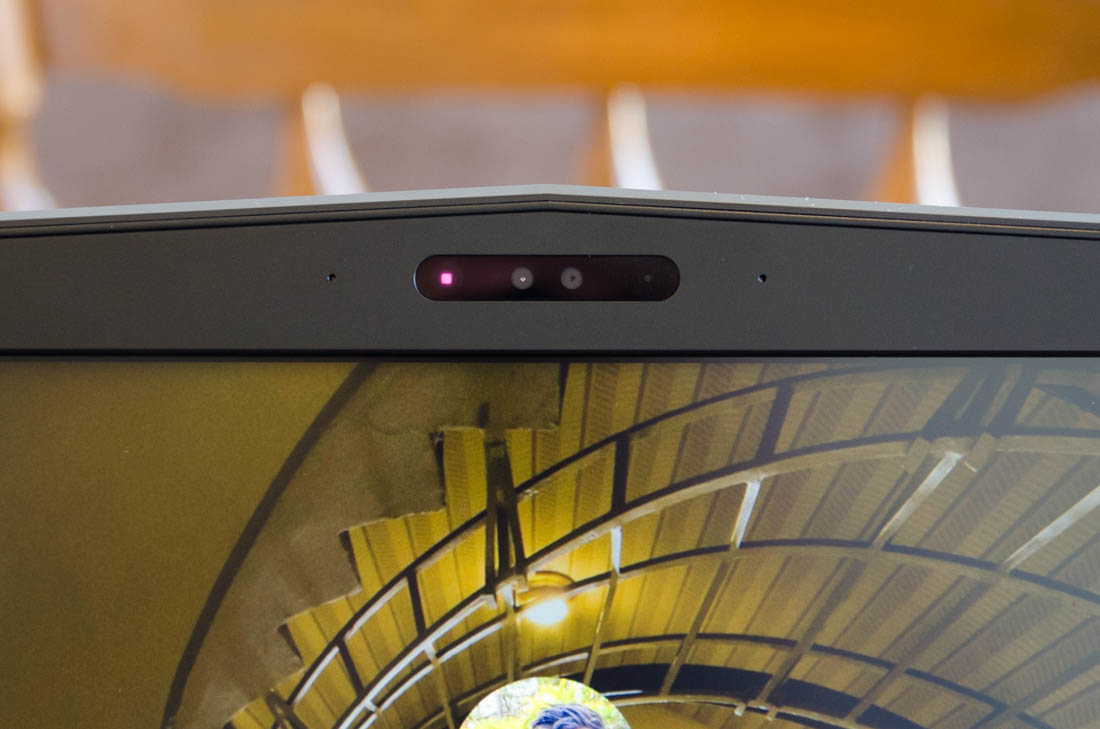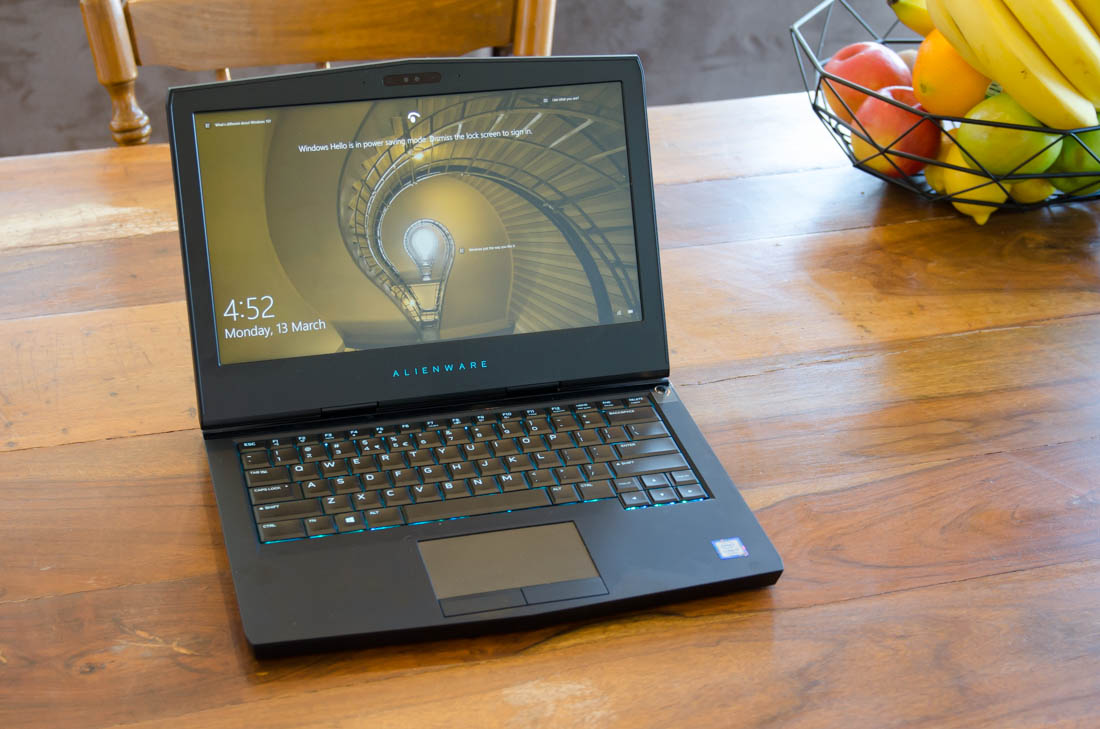If you want a reasonably small and portable gaming laptop, the Alienware 13 is one of the leading options on the market. With its 13.3-inch display, the footprint of this laptop is smaller than a typical 15-inch laptop, and if you're willing to put up with extra thickness and weight, it's possible to use it as a portable workstation instead of an ultraportable.
Like many Alienware laptops, the 13 comes in a large range of configurations. Depending on how much you want to spend, you can kit out this laptop with a GTX 1050 / Ti or GTX 1060 discrete GPU, as well as quad-core Kaby Lake CPUs, up to 32 GB of RAM, up to 2 TB of PCIe storage, and either a 1080p LCD or 1440p OLED display. Prices range anywhere from $999 to nearly $3,500.
The Alienware 13 is a relatively unique product as few of the major gaming laptop manufacturers produce 13-inch devices. MSI, Gigabyte, Aorus and Razer only go down to 14-inch systems, leaving Alienware almost unopposed in this space.
It's not an automatic win for the Alienware 13 in the size and weight arena, though. At 24mm thick and 2.6 kg heavy (5.7 lbs), it's not attempting to be the slimmest or lightest it could be. In fact many 14-inch laptops are more portable than the Alienware 13, including the Razer Blade (1.9kg heavy and 18mm thick), the MSI GS43VR (1.8kg and 23mm) and Aorus X3 Plus v7 (1.8kg and 23mm).
The Alienware 13 also runs into a footprint issue. Despite its smaller display, it's not physically smaller than any of the aforementioned 14-inch laptops. This means the Alienware 13's display is flanked by large bezels, which could easily have accommodated a 14-inch panel. I'd be disappointed if Alienware was using the smaller 13-inch display as a marketing bullet point, making the system sound smaller and more portable than it is, rather than giving users the largest display possible in this form factor.
There are a couple of reasons why the Alienware 13 is larger than its competitors. The main reason is there's a beefy cooling solution that uses two massive heatsinks attached to the rear of the device. Air is drawn in through large vents on the sides and base of the laptop, and exhausted through the rear. There's a lot of metal used here, which adds to the weight of the device.
Alienware has also opted for a large 76 Wh battery inside the body, which is marginally larger than the 73 Wh and 70 Wh cells used in the Aorus X3 Plus v7 and Razer Blade, respectively. Combined with the smaller display, you can expect the Alienware 13 to last longer than its competitors on battery.
There is an excellent selection of ports on the Alienware 13. On the rear you get a power connector, HDMI 2.0, mini-DisplayPort 1.2, Thunderbolt 3 USB Type-C, Ethernet and the Alienware Graphics Amplifier Port. Having these ports on the rear makes sense if you're primarily using the laptop on a desk, as you can plug in things like a display and a wired network without cluttering the sides of the device.
On the sides of the Alienware 13 are two USB 3.0 Type-A ports, one on each side, plus a USB 3.1 Type-C port (not Thunderbolt 3) on the right. There are two 3.5mm audio jacks for headphones and a microphone on the left.
Towards the front of each edge are the large speakers included with the Alienware 13. These speakers can go quite loud, but the quality isn't particularly impressive, especially as there are noticeable distortions at high volumes. Don't expect much bass either, although the speakers are less tinny than many ultraportables.
The design of the Alienware 13 is very similar to every other Alienware laptop released in the last few years. On the metal lid is Alienware's signature Y-shaped pattern with their alien head logo, which adds a bit of gamer style to the design. The palm rest is made from a soft-touch black plastic, which is clean and stealthy but attracts fingerprints easily. While I typically prefer more business-oriented industrially-designed laptops, the Alienware 13's design is good as far as gaming laptops are concerned.
Of course, it wouldn't be an Alienware laptop without a ton of LED lighting. The Alienware 13 has eight RGB lighting zones: four in the keyboard, plus a zone in each of the trackpad, power button, Alienware text, and alien head logo. This provides a great level of customization, although it's disappointing you can't control the color of individual keys, which is possible on the Razer Blade.
The keyboard on this laptop is decent. The layout is great, with large modifier keys, a full-sized set of arrows, and a decent range of functions mapped to the F-keys. Travel distance was impressive, and tactile feedback was very good. This leads to a great experience while gaming or typing.
The trackpad is also very solid. The trackpad's surface is good, which provides a comfortable tracking experience, while the tracking itself is excellent. You won't be using the trackpad for any serious gaming, but it's nice to see massive physical click buttons included here.
Alienware is one of the few gaming laptop manufacturers that includes Windows Hello and Tobii eye-tracking support across their entire product line-up. The Alienware 13's implementation is the same as the Alienware 15's, so it's very solid and works well for facial recognition log ins and eye tracking. Personally I'm not a huge fan of eye tracking in games, and there's only a limited selection of games that implement support, but it's a neat feature for those that want to try it out.
There are technically three display options available for the Alienware 13, but I would not recommend the 1366 x 768 option under any circumstances. My review unit included a 13.3-inch 1080p IPS LCD and there's a 2560 x 1440 OLED option available for those that want to spend an extra $250.
There are some disappointing aspects to both the 1080p LCD and 1440p OLED options for gamers. Neither display comes with support for G-Sync, which is a feature available on some competing devices. Neither supports refresh rates above 60 Hz either, and while the fastest GPU available (the GTX 1060) isn't particularly suited to high-refresh gaming in modern titles, it's possible to achieve well over 60 FPS in games dating a few years back.
Alienware claims the 1080p LCD option is only good for 300 nits of brightness, but in my testing, it comfortably hit 377 nits at 100%. Contrast was good, at 1180:1, while color temperature was too cold, which is a typical trait of most laptop displays. Color performance out of the box is decent but not hugely accurate, although the display looks vibrant and decent in general, thanks in part to great viewing angles.
A quick color calibration using SpectraCal's CALMAN 5 software allowed the Alienware 13 to hit very accurate levels. I'm not sure how many creative professionals will actually use a laptop like the Alienware 13, but it is possible to use this laptop for color accurate work when properly calibrated.
